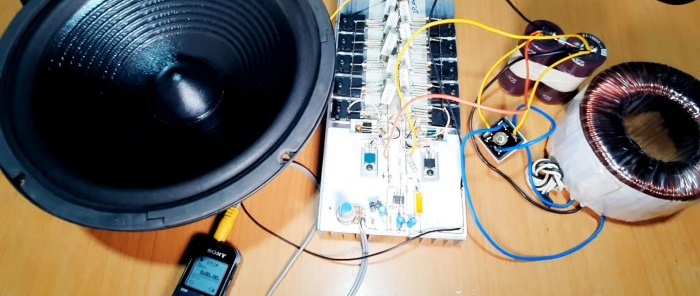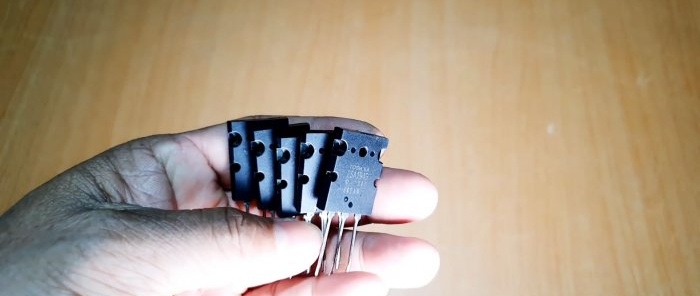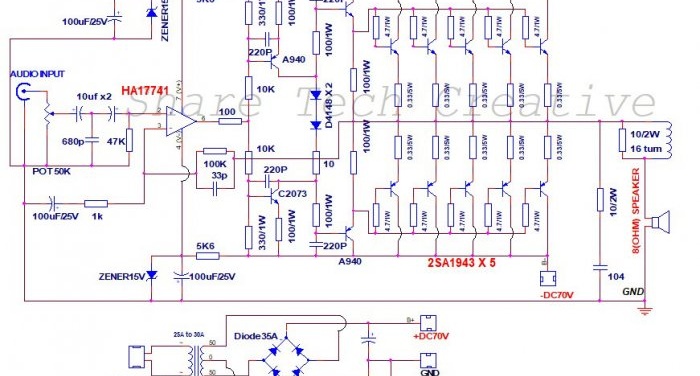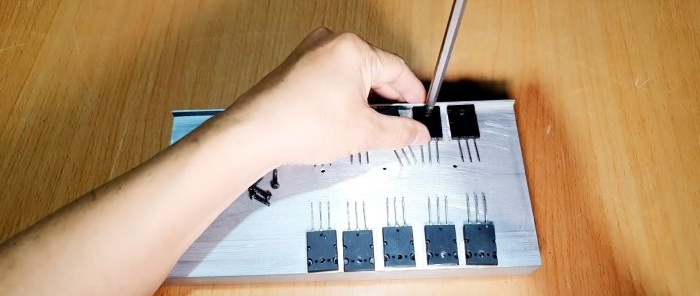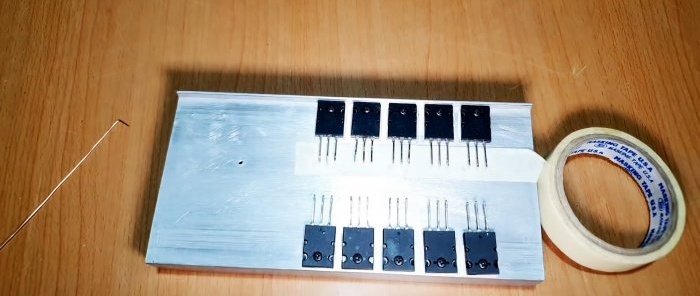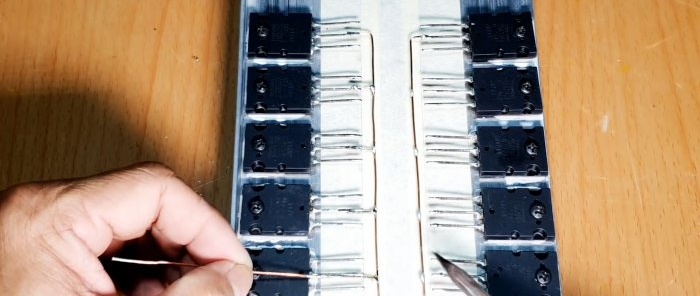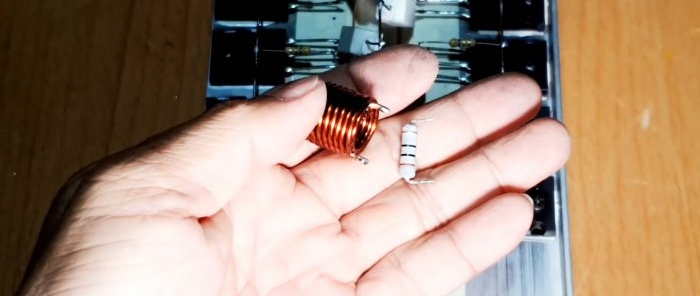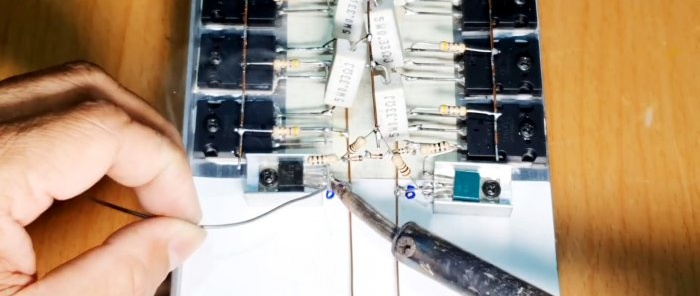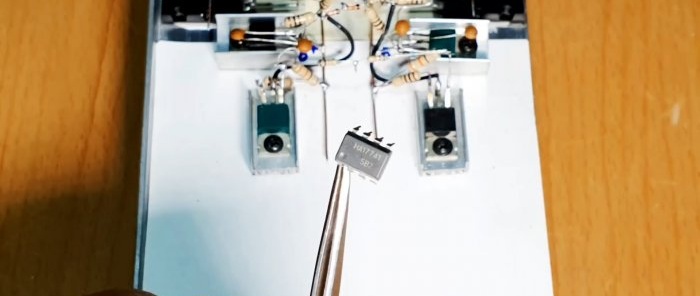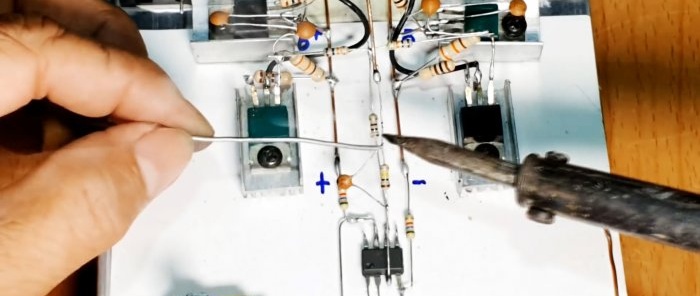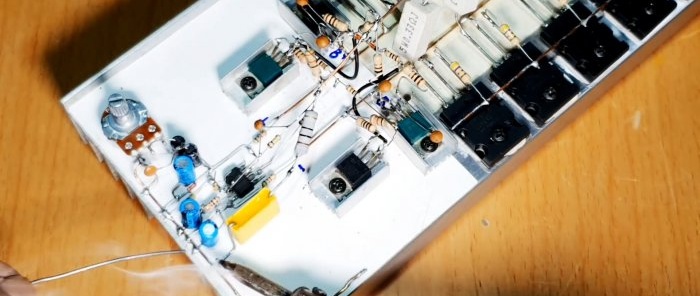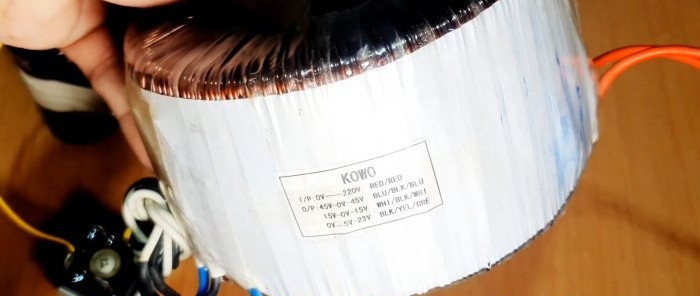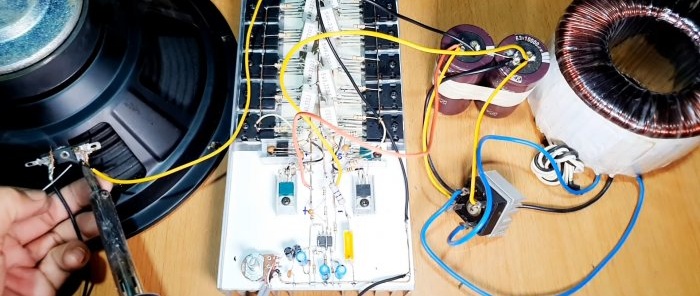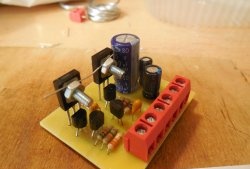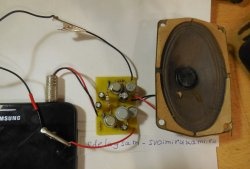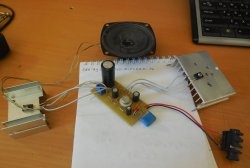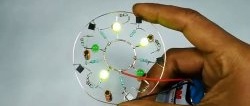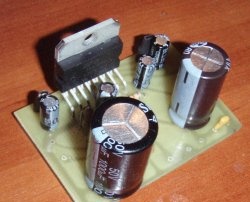Every radio amateur must assemble an audio power amplifier at least once in his life. In this example, just such a sample with a power of 500 W is presented. This model is assembled quickly, literally in 1 hour. Amplifier class - AB, analog based on bipolar transistors. The scheme is built according to the classical principle. The output transistor is composite, consisting of 5 pieces for each arm.
The use of an operational amplifier with negative feedback in the input stage allowed linear distortion to be minimized.
Will need
Power transistors and operational amplifier:
Other components:
Scheme
Bipolar power supply - 70 Volts.
How to make a powerful amplifier
We drill holes in the radiator for the transistors and cut threads into them. We lubricate the mica spacers on both sides with thermal conductive paste and place them in the places where the transistors will be attached.
We install transistors. 5 pieces of one structure on one side, another on the opposite.
From below, under the contacts, we insulate the radiator with adhesive tape.
We connect the collectors on each side.
We solder matching resistors to the bases.
We solder matching five-watt resistors to the emitters and connect them to a common conductor.
From a coil of 16 turns with a 1.5 mm wire and a resistor, we will assemble a buffer circuit and connect it to the output of the amplifier.
Next, we solder the control transistors and correction circuits according to the diagram.
Be sure to remember to include RF capacitors in the circuit, which will prevent the amplifier from excitation at high frequencies.
The operational amplifier comes into play.
You can use any other one. Next, we attach the variable resistor to super glue.
We continue to assemble the diagram.
We solder the snubber chain at the end.
We solder wires with connectors to the amplifier output.
The amplifier is ready. Let's move on to assembling the power supply. It has the most classic circuit of a diode bridge and a pair of powerful capacitors.
The transformer is made on a toroidal core.
We connect dynamic cooking to the amplifier.
Everything works perfectly.If everything is assembled correctly and from serviceable components, then the amplifier does not need tuning.
Before connecting the speaker, you should measure the midpoint voltage. It should be equal to half the nutrition.
200 W speaker. There is enough power to spare that it is not even possible to increase the potentiometer by 1/3, as the diffuser begins to shake violently. Using a powerful speaker system solves these problems.
